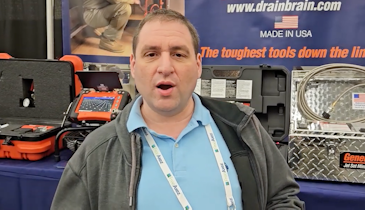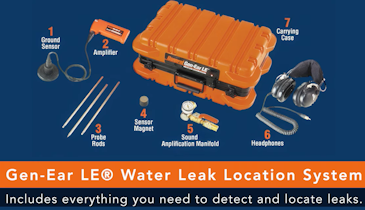Interested in Tools?
Get Tools articles, news and videos right in your inbox! Sign up now.
Tools + Get AlertsWhen press technology was first introduced in North America 25 years ago by RIDGID, the idea of pressing in place or using the tool frequently was almost unheard of in the industry.
Today, press tools have become a reliable and accessible option in all commercial and residential settings, with a variety of press tool options available depending on the job site.
When deciding which type of press tool to use, tool capacity, application and size are the primary factors. Basic press tool categories are:
- Mini — This press tool can be used for 1/2-inch to 3/4-inch copper, stainless steel, and PEX tubing. It’s small and lightweight, making it perfect for most residential and service-oriented plumbers.
- Compact — This press tool category goes up to a slightly larger capacity: 1/2-inch to 1 1/4-inch on copper and stainless steel, up to 1 1/2-inch on PEX, 1-inch on carbon steel, and 1 3/8-inch on refrigeration lines. This tool is a good fit for residential as well, but can be used for light commercial, while still maintaining a compact design.
- Standard — This tool category is the workhorse that can be used for residential, commercial, and industrial applications. It is capable of pressing up to 4-inch copper and stainless steel. Depending on the brand, tool add-ons will allow pressing with this tool all the way up to 4-inch carbon steel and up to 2-inch PEX.
- Extended — A dedicated tool for up to 4-inch carbon steel with the same capacity as the standard tool in the smaller sizes. It’s ideal for anyone in a commercial/industrial setting pressing large-diameter fittings daily.
Along with these basic categories, there are a few additional features that you’ll want to look for when making a purchase:
- Tool ergonomics — Ergonomics are a key differentiator between press tools and vary from tool to tool. Along with overall tool design, one tool feature impacting ergonomics is grip style. There are two options: inline and pistol grip. In commercial settings with standard and extended tools, pistol grip tools help reduce fatigue, but generally, it comes down to a user’s preference which style offers more comfort when pressing repeatedly during the day.
- Enhanced lighting — With many jobs being done in low to no light situations, an LED light on the press tool is essential to lighting up the work area.
- Head rotation — Press tool head rotation is another advanced feature to consider for getting around obstacles or pressing in tight spaces. This feature is particularly useful in residential settings.
- Bluetooth capabilities — Wireless technology can help to track the number of presses a tool is logging, as well as provide direct access to service centers and the last known location of the tool.
Ultimately, whichever press tool you choose, each is designed to help you work smarter, not harder, something that benefits everyone on the job site.
About the Author
Joe Devries is a product manager for RIDGID, a global manufacturer of more than 300 dependable and innovative tools, trusted by professional trades in over 100 countries. Learn more at RIDGID.com.






